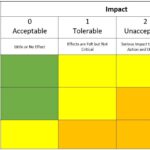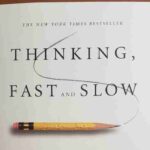In our interconnected world, trust forms the backbone of successful business relationships. It’s the foundation upon which companies build customer loyalty, attract investors, and foster productive workplace environments. However, as vital as trust is, it remains remarkably fragile – easily shattered and agonizingly slow to rebuild. In an age dominated by the rapid exchange of information, the vulnerability of trust has become blatantly apparent, leaving businesses in a perpetual battle against misinformation and the resulting misbelief, as well as the loss of personal and brand trust.
The Vulnerability of Trust
The erosion of trust can occur swiftly and without warning, often triggered by misinformation. A stark illustration of this is the experience of behavioral economist Dan Ariely, as noted in his book “Misbelief.” Ariely found himself falsely implicated in a conspiracy theory alleging that he, along with figures like Bill Gates, orchestrated the COVID-19 pandemic for personal gain. Despite the baselessness of these claims, the damage to his reputation was instantaneous, highlighting the precarious nature of trust in the digital age.
Another example of trust erosion was Volkswagen’s emissions scandal in 2015 when the company was found to have installed software in diesel vehicles to manipulate emissions tests. This breach deceived consumers who believed they were purchasing environmentally friendly cars and severely undermined trust in Volkswagen’s adherence to legal and ethical standards. The repercussions extended well beyond the Volkswagen brand, casting a shadow of doubt across the entire automotive industry. Other automakers, even those not implicated in similar misconduct, faced increased consumer scrutiny and skepticism, illustrating how a single company’s actions can erode trust industry-wide.
Numerous other examples of events have significantly impacted businesses, particularly those in trust-centric industries like banking and insurance. Consider the collapse of Silicon Valley Bank, which triggered widespread distrust throughout the entire financial sector. Similarly, in September 2008, American International Group, Inc. (AIG), one of the world’s largest insurance companies, encountered a severe liquidity crisis. This crisis severely damaged trust in the entire insurance sector.
These examples underscore how, through no fault of their own, individuals and businesses can experience a loss of trust due to broader industry events or associations.
Acceleration of Mistrust
The spread of mistrust in today’s interconnected world is accelerating at an unprecedented rate, influenced significantly by a combination of human cognitive biases and the complex dynamics of social media platforms. Misinformation, when planted, can take root quickly and deeply as a result of these factors, often leading to widespread public skepticism and erosion of trust.
Cognitive Biases: Human psychology plays a critical role in how information is processed and perceived. Confirmation bias is particularly impactful; it occurs when individuals prefer information that corroborates their existing beliefs or hypotheses, regardless of whether the information is true. This bias can cause people to dismiss evidence that contradicts their views, reinforcing erroneous beliefs and contributing to the persistence of misinformation.
For instance, J.K. Rowling faced backlash and mistrust from segments of her readership when comments she made on X (formerly Twitter) were perceived through the lens of existing cultural debates, polarizing fans according to their pre-existing beliefs on gender issues.
The bandwagon effect compounds this issue by increasing the likelihood of adopting beliefs as they become more popular, irrespective of their being true. This means that once a piece of misinformation gains some traction, it’s likely to be accepted by more people simply because others believe it.
“Repeat a lie often enough, and people will believe it.” Nazi minister of propaganda, Joseph Goebbels.
Echo Chambers: Social media platforms are structured in a way that often creates echo chambers – environments where users are exposed predominantly to viewpoints that align with their own. This selective exposure reinforces one’s existing beliefs and filters out contradictory information, which can accelerate the spread of mistrust when these communities latch onto false narratives. For example, Starbucks was erroneously accused of funding Israel during conflicts, a rumor that started online and was amplified within certain communities, leading to calls for a boycott, despite repeated clarifications from the company that it was not involved in political funding.
Algorithmic Amplification: The algorithms that govern what content is displayed on social media tend to prioritize engagement, such as likes, shares, and comments, over the accuracy of the information. Misinformation is often designed to trigger strong emotional responses and is, therefore, highly engaging, which leads to further amplification by algorithms. This creates a feedback loop where misinformation is more widely disseminated than accurate and less sensational content. During the 2016 U.S. Presidential Election, fake news about both candidates proliferated on social media platforms, where sensational and often misleading headlines were prioritized by algorithms, misleading the public and creating distrust across the entire political spectrum.
Speed and Scale of Information Spread: The sheer speed at which information can spread on the Internet means that false information can travel globally in minutes. Unlike in the past, when gatekeepers like editors and experts had the opportunity to vet information before it reached a wider audience, modern digital platforms allow anyone to publish without any checks. This rapid dissemination makes it difficult to correct misinformation before it has been seen and believed by millions of people. United Airlines saw a massive trust erosion after a video of a passenger being forcibly removed from a flight went viral; the rapid spread outpaced the company’s initial response, leading to a global PR crisis.
Decontextualization: Information online is often stripped of context, making it more susceptible to misinterpretation. Without full background details, partial or misleading snippets of information can be perceived as the whole truth, which can create conflict and mistrust, particularly if these snippets are designed to be sensational or provocative. A notable example occurred with Nick Sandmann, a student from Covington Catholic High School, who was depicted in a viral video clip as confronting a Native American elder during a rally in Washington, D.C. The initial clip, lacking context, led to widespread condemnation of Sandmann. Later, extended footage revealed a more complex interaction, including provocations from other groups, which the initial video did not show. This incident highlights how decontextualized information can lead to significant reputational damage and public backlash.
Lack of Accountability: Anonymity on many social platforms allows users to spread misinformation without facing direct repercussions. This lack of accountability makes it easy for individuals to disseminate false information intentionally or out of ignorance. A hoax claiming that Chuck Norris had died spread quickly online, fueled by anonymous sources that faced no repercussions, briefly confusing fans and diminishing trust in celebrity news outlets until it was debunked.
The Funnel of Disbelief
Dan Ariely’s concept of the “funnel of disbelief” provides a distressing analogy for how mistrust can spread. For example, the discovery of your spouse’s infidelity not only brings into doubt everything they have ever told you in a cascade of distrust but often even extends to mutual friends whom you may now suspect as being complicit in your spouse’s affair. Similarly, when a business faces a publicized incident of mistrust, whether due to real or perceived missteps, it can lead to a comprehensive questioning of its integrity. This loss of trust can even spread beyond the company to an entire industry. A vivid example occurred following the Volkswagen emissions scandal, which not only damaged the automaker’s credibility but also cast a shadow over the entire automotive industry, leading to heightened public and regulatory scrutiny.
Examples of Trust Erosion
Various instances across industries illustrate how quickly trust can be compromised:
- Customer Service Failures: In 2017, British Airways faced significant trust erosion when a major IT failure led to the cancellation of over 75,000 flights during a holiday weekend, stranding passengers worldwide and sparking widespread criticism of their handling of the crisis.
- Quality Issues: Samsung faced a major crisis with the Galaxy Note 7 when its batteries started catching fire, leading to a global recall and significant damage to consumer trust in the brand and similar products.
- Corporate Scandals: The Enron scandal, which involved a major accounting fraud, not only led to the company’s collapse but also sparked a global reevaluation of corporate governance standards.
- Data Breaches: The Equifax data breach exposed the personal information of 147 million people, with serious repercussions for trust in the company and raising broader concerns about data security in the financial sector.
- Misleading Marketing: The Listerine lawsuit in 2005, where the company had to settle for millions of dollars due to false advertising claims about the ability of its antiseptic to prevent colds, is another example of how deceptive practices can lead to legal and trust issues.
Mitigating Strategies
Dealing with the erosion of trust due to misinformation presents a formidable challenge, especially in an era where misinformation can spread rapidly and widely. Even when businesses or individuals are entirely blameless, once misinformation takes hold and distrust starts to fester, it can be incredibly difficult to reverse. Here are several proactive strategies that businesses can employ to inoculate themselves against such risks and potentially mitigate the impact of misinformation:
Building a Strong Foundation of Trust: Businesses should ensure that every aspect of their operations, from product quality to customer service, is consistently reliable. A strong track record can serve as a buffer against occasional negative claims. Regular communication about processes, sourcing, and business practices with stakeholders fosters transparency and enhances trust, making stakeholders more likely to give the benefit of the doubt in uncertain situations.
Proactive Community Engagement: Developing and maintaining a strong, engaged community around a brand is essential. A loyal community acts as an advocate and defender of the brand, especially in times of crisis. Keeping open communication channels with customers and stakeholders through regular updates and engagements helps maintain a positive perception and ensures that the brand’s narrative is heard.
Educating the Audience: Promoting critical thinking and information literacy among the audience is crucial in preventing the spread of misinformation. Businesses should educate their customers on identifying reliable sources of information and actively address common misconceptions about their industry or products through their communications.
Monitoring and Responding: Vigilant monitoring of what is being said about the brand online is necessary. Social media monitoring tools can help businesses respond swiftly to any misinformation. Forming partnerships with fact-checking organizations can also help verify information related to the business, aiding in maintaining credibility.
Crisis Management Planning: Having a comprehensive crisis response strategy in place is always good advice. This plan should include specific steps for dealing with various types of misinformation and involve clear communication strategies and predefined roles for team members. Understanding the legal options available for dealing with defamation and intentional misinformation is also essential.
Maintaining Ethical Standards: Upholding strict ethical business practices is fundamental. Companies should avoid grey areas that could be misconstrued or manipulated into negative stories and ensure all employees know the importance of maintaining trust.
Adaptive Public Relations: Regularly sharing positive stories about the business and its contributions to society can counterbalance instances of negative press. Collaborating with credible and respected influencers can also help amplify positive messages and endorse the integrity of the brand during crises.
Conclusion
In the digital era, trust is notably fragile and easily damaged by widespread misinformation, impacting individuals and businesses alike, often through no fault of their own. The dynamics of social media exacerbate this problem, as cognitive biases and echo chambers amplify false narratives, making it increasingly challenging for entities to maintain their credibility. Understanding why trust erodes so quickly in this environment highlights the importance of robust strategies to counter misinformation and maintain public confidence.
How will you adapt your strategies to maintain trust in an era dominated by rapid misinformation?












